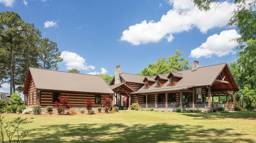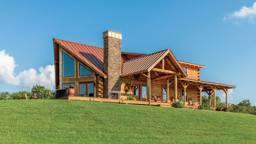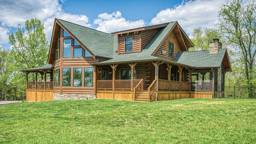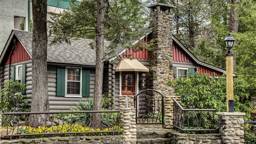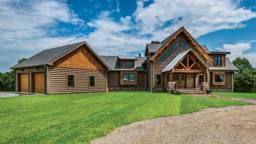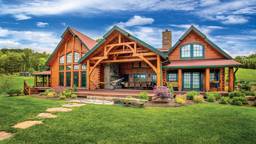
As Florida transplants in search of a simpler life, Karen and Gary Manfredi found a place that pretty much had it all — a hilltop farmstead with a 19th-century brick house, sun-drenched land sloping down to a winding creek and a four-mile commute to a pleasant Carolina town.
Just one thing was missing from their country idyll: a hewn-log tobacco barn. In North Carolina these historic, handcrafted log buildings, once used to dry and cure tobacco leaves, define the rural landscape. Even so, they're fast disappearing, victims of modern bulk-curing techniques and the general malaise of the tobacco industry.
"I love old farm buildings as much as I love farms," says Karen, who previously supervised the renovation of several older homes in Florida. "After I learned that this place once had several tobacco barns, I wanted to bring one back—something we could put down by the creek as a little shelter, maybe with a grill and a few chairs," she recalls.
After running an ad in the local paper, she found one on an old homestead near the Virginia line. At the time, Karen had no idea it would become much more than a rustic shelter and lead her family to embrace a log home lifestyle they hadn't even considered. The tobacco barn Karen bought was simple and typical, measuring about 16-by-14 feet and constructed entirely out of oak logs hewn with a broad ax and an adze.

"The roof was intact, and the wood was dry," says Karen, who hired a contractor to number each log, disassemble the barn and transport it back to her farm. Unfortunately, the contractor moved out of the area shortly thereafter, and the logs sat in a pile for a year. Then in the fall of 2003, Karen and Gary met Kevin Thomas, a local builder who specialized in homes constructed of vintage hewn logs. Since 1985, Kevin and his father had built some 200 log homes, no two alike. "Each one is a blend of history and art," says Kevin, who owns two log homes of his own and says he wouldn't live in anything else.
Karen recalls a frigid December morning down by the stream with Kevin, drawing up plans for the cabin on a paper napkin she'd grabbed from her car.
"I'm a no-blueprint type of person," Karen says cheerfully. "I'll take a vacation in the summer without making any hotel reservations. I don't like locking myself in, and that little napkin drawing meant total freedom."

Here are some design ideas that came to life in the Manfredi cabin:
- Small kitchen appliances and storage in every nook suggest the tidy efficiency of a boat cabin while a massive stone fireplace serves as a visual anchor in the main living area.
- A wraparound porch more than doubles the cabin's floor space during three seasons. With posts, railings and rafters fashioned from the old round "tier poles" on which tobacco bundles dried, the porch invites lingering.
- After pouring conventional concrete footings, Kevin faced a cement-block foundation with smooth river rock hauled by wheelbarrow from the creek bed.
- For gnarled oak flooring she contacted Vintage Lumber, a Maryland company specializing in reclaimed wood. The cabin's windows, dating from the 1920s, were salvaged from tear-downs near Karen's old home.
Builder: Kevin Thomas




